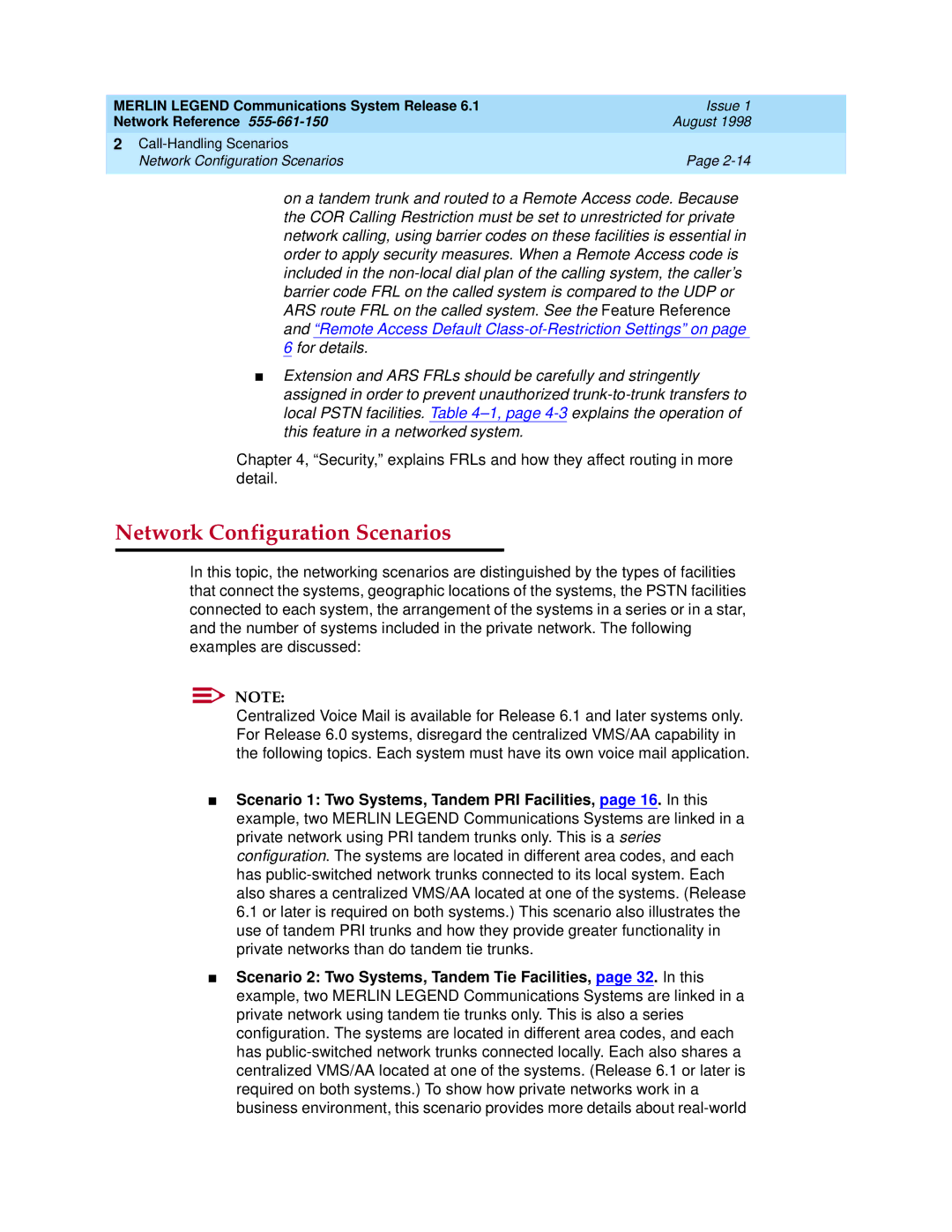MERLIN LEGEND Communications System Release 6.1 | Issue 1 |
Network Reference | August 1998 |
2 |
|
Network Configuration Scenarios | Page |
|
|
on a tandem trunk and routed to a Remote Access code. Because the COR Calling Restriction must be set to unrestricted for private network calling, using barrier codes on these facilities is essential in order to apply security measures. When a Remote Access code is included in the
■Extension and ARS FRLs should be carefully and stringently assigned in order to prevent unauthorized
Chapter 4, “Security,” explains FRLs and how they affect routing in more detail.
Network Configuration Scenarios | 2 | |
|
|
|
In this topic, the networking scenarios are distinguished by the types of facilities that connect the systems, geographic locations of the systems, the PSTN facilities connected to each system, the arrangement of the systems in a series or in a star, and the number of systems included in the private network. The following examples are discussed:
NOTE:
Centralized Voice Mail is available for Release 6.1 and later systems only. For Release 6.0 systems, disregard the centralized VMS/AA capability in the following topics. Each system must have its own voice mail application.
■Scenario 1: Two Systems, Tandem PRI Facilities, page 16. In this example, two MERLIN LEGEND Communications Systems are linked in a private network using PRI tandem trunks only. This is a series configuration. The systems are located in different area codes, and each has
■Scenario 2: Two Systems, Tandem Tie Facilities, page 32. In this example, two MERLIN LEGEND Communications Systems are linked in a private network using tandem tie trunks only. This is also a series configuration. The systems are located in different area codes, and each has
